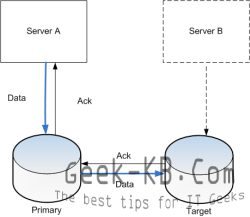From time to time it happens that mysql password for root user gets lost and you are required to reset mysql password. here’s how it’s done: System Requirements: A Linux or Windows machine running mysql server. The following process will teach you how to reset mysql password for root user (or any other user) on […]
You are browsing archives for
Tag: mysql
How To: Backup and Restore with mysqlhot...
Tutorial: Backup and Restore with mysqlhotcopy I’d like to share with you a way to backup MySQL databases and that is by using a perl script included with MySQL called mysqlhotcopy. Things to note about mysqlhotcopy are: It only works with MyISAM and ARCHIVE storage engines. Does not work with InnoDB. Is faster that mysqldump […]
How To: Find MySQL table storage engine
Tutorial: Find MySQL Table Storage Engine MySQL supports several storage engines that act as handlers for different table types. MySQL storage engines include both those that handle transaction-safe tables and those that handle nontransaction-safe tables. As of MySQL 5.1, MySQL Server uses a pluggable storage engine architecture that enables storage engines to be loaded into […]
How To: Grant MySQL Permissions for new\...
Tutorial: Grant MySQL Permissions in for new\existing users What the Red Means The lines that the user needs to enter or customize will be in red in this tutorial! The rest should mostly be copy-and-pastable. About MySQL MySQL is an open source database management software that helps users store, organize, and later retrieve data. It has a variety of options […]
A Basic MySQL Tutorial
A Basic MySQL Tutorial About MySQL MySQL is an open source database management software that helps users store, organize, and retrieve data. It is a very powerful program with a lot of flexibility—this tutorial will provide the simplest introduction to MySQL How to Install MySQL on linux: Ubuntu and CentOS If you don’t have MySQL […]
How To: MySQL replication – Master / Sla
MySQL replication enables one database server (we’ll call it the Master server) to be replicated to one or more database servers (we’ll call those the Slave servers). With MySQL, replication is asynchronous. This means your Slave servers do not need to be connected permanently to receive updates from the Master – for example, you could […]






